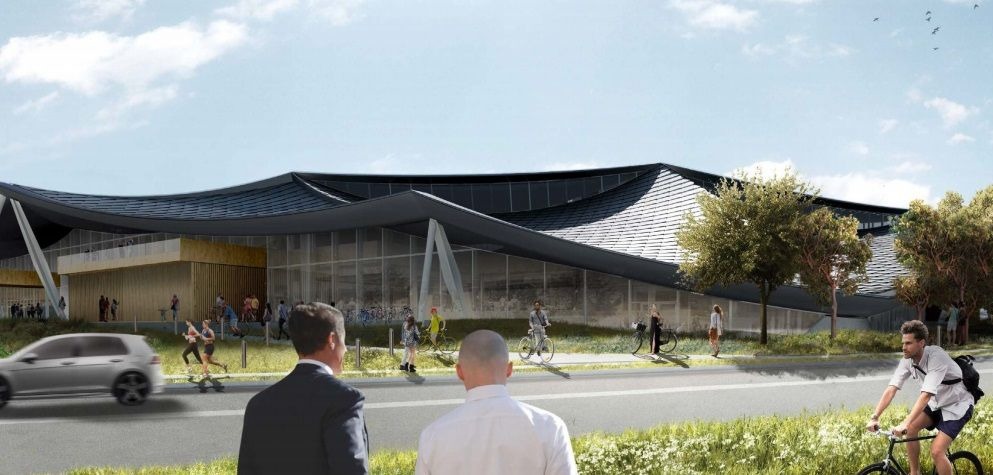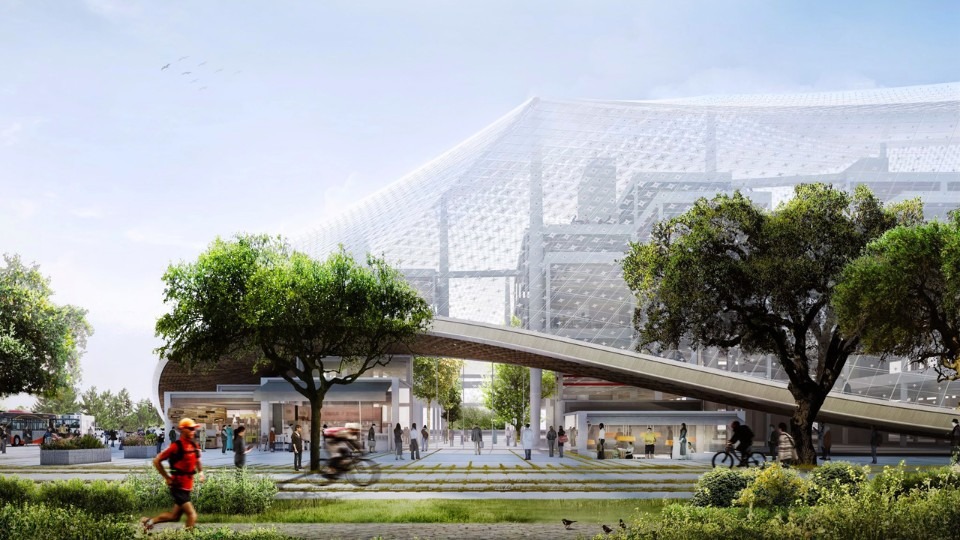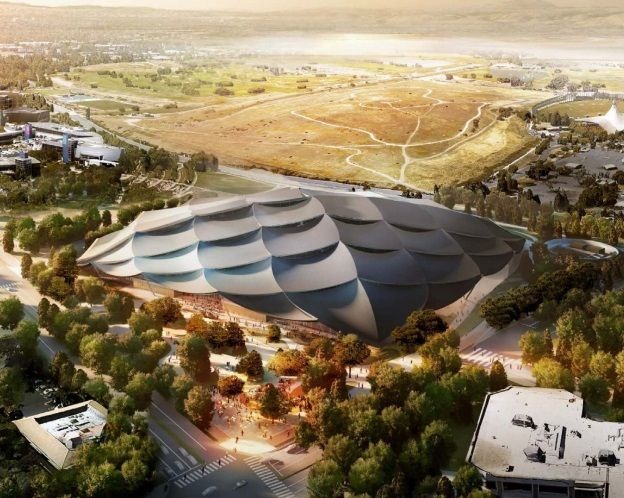Less than two years ago, Google unveiled plans to build a new campus project as a vast open air city replete with greenery, inside of a massive glass greenhouse atrium. Now, the company is forwarding plans to build a basic tent-shaped building.
Grand Original Plans
The radical reduction in innovation and grandiosity is no doubt related to a new era of cost cutting ushered over the last couple years by its Chief Financial Officer Ruth Porat, who has been seeking to get spending under control in response to shrinking profit margins. Other glamorous vanity projects, ranging from Google Glass to robots to Chromebook Pixel to Google Fiber high speed internet have also been curtailed.
The original plans for Google's corporate expansion in Mountain View, California, appeared to be inspired by Apple Park, which was originally detailed in 2011 by Steve Jobs under the working name Apple Campus 2.
Echoing themes introduced by Apple, Google hired star architect Bjarke Ingels of BIG and designer Thomas Heatherwick of Heatherwick Studio to design open, glassy new offices with flexible floor plans, integrated into a green park-like campus rather than the typical, conventional Silicon Valley office buildings surrounded by vast, dreary expanses of surface parking lots.
The plans unveiled in 2015 depicted a series of massive glass canopies stretched over configurable, modular office structures, echoing a futuristic "Logans Run."
Ingels described the reconfigurable interior of the structure as being like "giant pieces of furniture that could be connected in different ways," calling to mind the company's Project Ara, a plan to build modular smartphones that were hyped at the company's developer conference last summer but canceled shortly afterward.
More Conventional Reality
Google has now unveiled plans for the approval of a smaller new North Bayshore office expansion, referred to as "Charleston East." Directly east of the company's existing Googleplex campus (which it acquired from Silicon Graphics over a decade ago), the new site will be developed as a more humble two story building.
The new site is directly south of the Shoreline Amphitheater, a large outdoor venue frequently used for music concerts. The company leases parking lots from the venue, and last summer held its Google IO conference at the facility.
The 595,000 square foot Charleston East project has a tent-like roof, but it's now opaque, erasing most of the original "blurring of nature and interior." The site also includes 10,000 sq ft of publicly accessible retail space in a "Green Loop" that cuts through the project. The more conventional building includes 4MW of solar capacity integrated into its roof, which is also designed to collect rainwater.
In comparison, the central "spaceship" building of Apple Park is over 2.8 million square feet. By itself, the separate "Phase 2" research and development complex Apple is building next to it includes more office space than Google's new Charleston East.
Apple Park incorporates 4MW of biogas fuel cells and a 16MW rooftop solar photovoltaic system that together function as the site's own power grid to enable continued operations even in a utility outage.
Apple is also completing a separate campus facility in Austin, Texas, with 1.1 million square feet of office space and its own 1.4 MW rooftop solar installation.
Google's cheaper, smaller and more practical new office plans reflect a reduction in ambitions for the company, which in the past has repeatedly expected to waltz into new businesses and repeat its original success with search engine monetization and paid placement ads.
Original grand plans to kill iPhone, derail iPad, marginalize Apple in mobile hardware with the acquisition of Motorola, create a significant impact in PCs with its ChromeOS platform, invent a new product category with Glass, revolutionize TV, introduce electronic mobile payments, do something interesting with robotics and usher in a new era of driverless cars have all been blindsided by the realities of unanticipated complexity and superior external competition.
 Daniel Eran Dilger
Daniel Eran Dilger










-m.jpg)






 Charles Martin
Charles Martin
 Christine McKee
Christine McKee
 Wesley Hilliard
Wesley Hilliard
 Malcolm Owen
Malcolm Owen
 Andrew Orr
Andrew Orr
 William Gallagher
William Gallagher
 Sponsored Content
Sponsored Content








72 Comments
So then, no moonshot campus?
I think their rampant overspending is finally catching up with them. Fiscal reality lands at Google.
"Google radically scales back glassy new HQ plans..."
Apparently...too much transparency?
Looks like a tortoise's shell. And not in a "heroes in a half shell" way, either.
One would think they would go solar, kinda like the Apple Park, but I guess, Apple as always is several steps ahead.